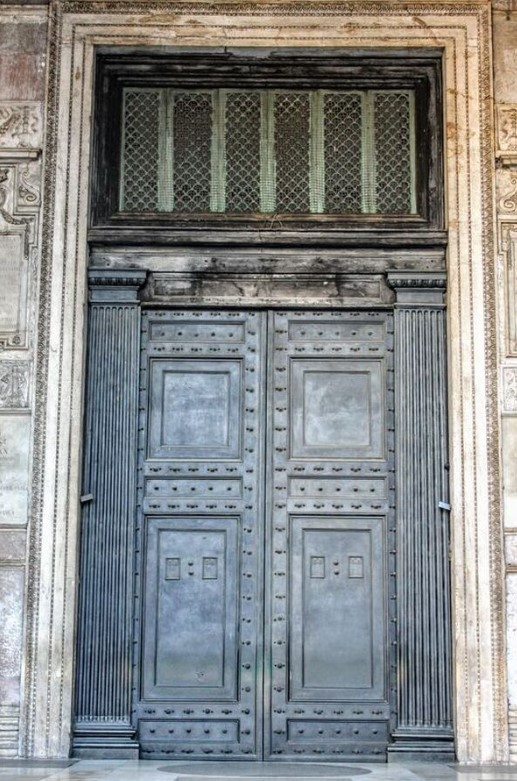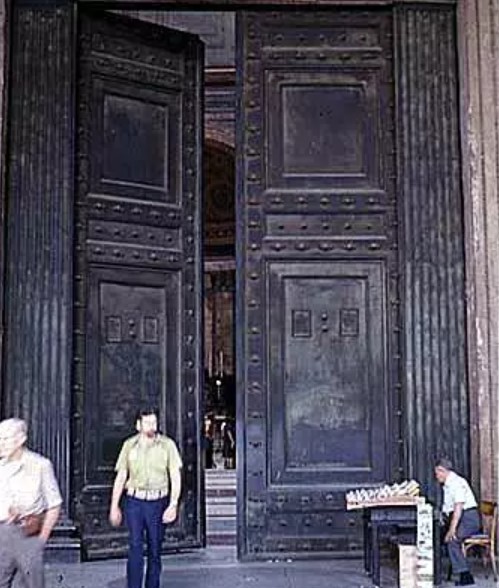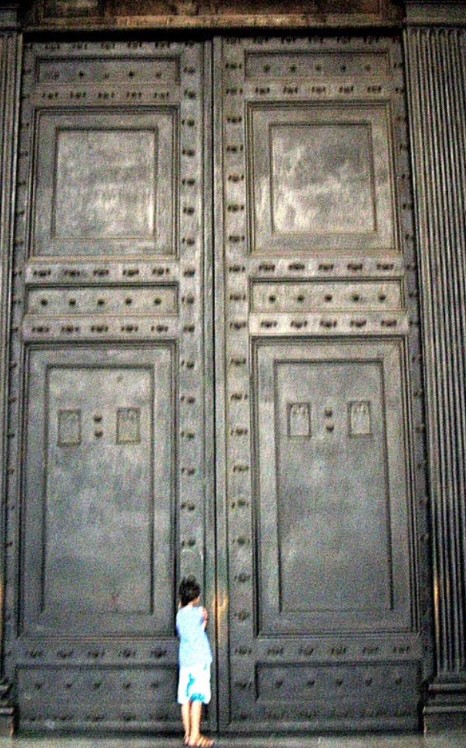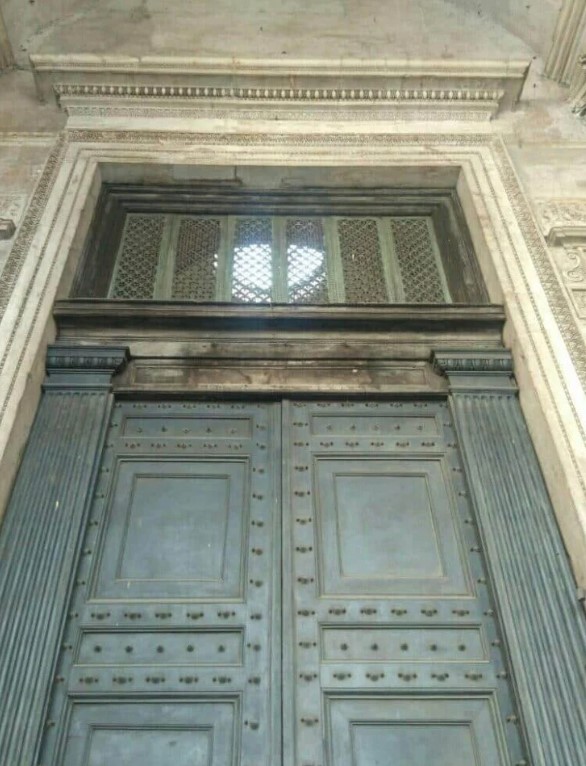The Pantheons Bronze Doors one of Rome’s most iconic monuments, is not only of remarkable architectural significance but also of extraordinary historical significance—it is the oldest door still in use in Rome. These bronze doors, dating back to around 115 AD, were crafted under Emperor Hadrian as part of his grand reconstruction of the Pantheon. Despite being centuries old, they are still in operation today, demonstrating the impressive craftsmanship and engineering skills of the ancient Romans. In this article, archeology.dulichvn.net explores the history, craftsmanship, and unique qualities of the Pantheons bronze doors
The History Behind the Pantheons Bronze Doors
Emperor Hadrian’s Reconstruction
The Pantheon we see today is not the original structure built by Marcus Agrippa in 27 BC. After the original temple was destroyed by fire, Emperor Hadrian commissioned its rebuilding around 115 AD. During this reconstruction, the bronze doors were added to enhance the grandeur of the temple. These doors are considered a significant part of Hadrian’s architectural vision, symbolizing the empire’s power and longevity.

Craftsmanship and Design of the Bronze Doors
Each bronze door at the Pantheon is a monumental feat of engineering and craftsmanship. Standing at seven and a half feet wide and twenty-five feet high, these doors are massive yet perfectly balanced. The technique used in their construction allowed them to be incredibly heavy, yet easy for a single person to open. This blend of strength and functionality is a testament to the advanced engineering practices of ancient Rome.
See more: Discovering the Ancient Thalpan Petroglyphs in Chilas, Pakistan
The Doors’ Role in the Pantheon
These massive bronze doors have not only served as an entrance to the Pantheon for centuries but also symbolize the enduring legacy of Roman engineering and craftsmanship. Despite the passage of over 1900 years, these doors are still in use, providing a direct link between the past and the present. They have witnessed countless moments of history, and their continued functionality serves as a reminder of Rome’s engineering prowess.

The Architectural Significance of the Pantheon’s Bronze Doors
Bronze Construction and Durability
The bronze doors are made of solid bronze, a material known for its durability and resistance to corrosion. This quality has allowed the doors to withstand the test of time and remain functional despite exposure to the elements for over 1900 years. Bronze was often used by the ancient Romans in architectural elements, prized for its ability to maintain structural integrity over long periods.

Masterful Balance and Functionality
One of the most impressive features of these doors is the balance and ease of operation. Despite their immense size and weight, the doors can be easily opened by one person due to the precision with which they were designed. The Romans mastered the art of balancing large, heavy doors, allowing for ease of use while maintaining the aesthetic grandeur and strength of the structure.
Symbolism of the Pantheon’s Doors
The Pantheon’s doors hold symbolic significance as well. They are not only an entrance to a temple but also an entryway to the rich cultural and historical legacy of ancient Rome. For centuries, the doors have allowed access to one of Rome’s most important architectural feats, and their continued use is a powerful symbol of the endurance and lasting impact of Roman engineering.
See more: The Magnificent Statue of Athena: A Symbol of Ancient Greek Art and Culture
Unique Features of the Pantheon’s Bronze Doors
Dimensions and Weight
The Pantheon’s doors are seven and a half feet wide and twenty-five feet high, making them not only an impressive feature of the building but also one of the largest and most magnificent doors in the ancient world. Their size, combined with the use of bronze, makes them visually striking and underscores the grandeur of the Pantheon itself.

Durability and Preservation
Despite their age, the bronze doors have remained in excellent condition, a testament to the quality of Roman craftsmanship and their careful maintenance throughout the centuries. The material itself, bronze, is known for its resistance to corrosion, which has contributed to the doors’ long-lasting durability. Preservation efforts over the years have ensured that they continue to function as originally intended.

A Functional Part of the Pantheon
Unlike many ancient structures that have deteriorated over time, the Pantheon’s doors continue to serve their original purpose. This is a remarkable feat, as many other ancient doors and architectural elements have been lost or relegated to museums. The Pantheon’s doors not only survive but are actively used, making them one of the few remaining direct links to ancient Roman architecture that is still part of everyday life in Rome.
Conclusion
The Pantheons bronze doors stand as a symbol of Rome’s architectural and engineering brilliance. With a history spanning over 1900 years, these doors are not just functional; they are a testament to the ingenuity and craftsmanship of ancient Rome. Their continued use today is a reminder of the extraordinary legacy of the Roman Empire and the lasting impact of their architectural feats. When visiting the Pantheon, these doors are a striking feature that provides a direct link to the ancient world, and they remain one of Rome’s most significant and enduring architectural elements.

CÁC TIN KHÁC
Mark Twain & Olivia Langdon: A 36-Year Love Story Filled with Laughter and Devotion
The Tollund Man: A 2,400-Year-Old Mystery Preserved in a Danish Bog
Skara Brae: Scotland’s Hidden Neolithic Village
Porta Nigra: The Hidden Depths of Trier’s Iconic Roman Gate